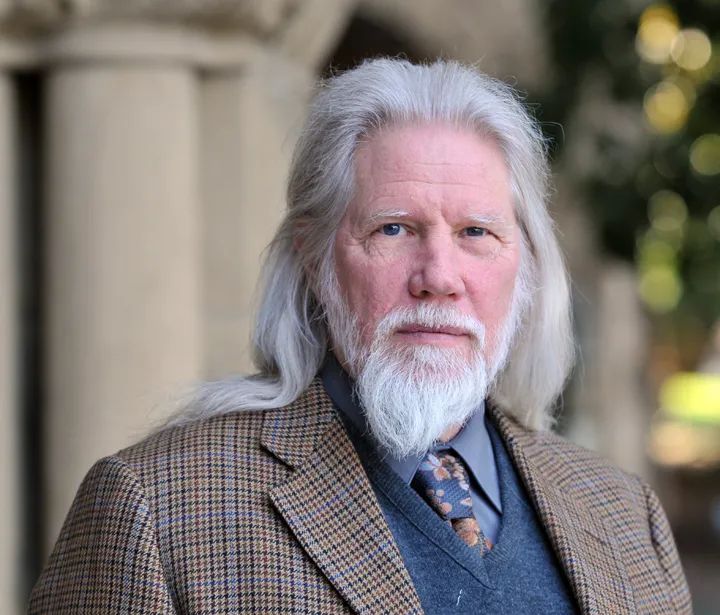
January 15,The 2020 ACM Fellow list is officially announced, including Whitfield Diffie, winner of the 2015 Turing Award and senior consultant of the Findora Institute for Advanced Study, Reason for election: Invented asymmetric encryption and a practical key exchange method.
It is understood that ACM is the abbreviation of the Association for Computing Machinery. Founded in 1947, it is one of the most influential professional academic organizations in the computer field in the world. ACM Fellow is an honor awarded to senior members by the organization. The purpose is to recognize scholars who have made outstanding contributions to computer-related fields. The review process is very strict and is selected once a year.
Under the recommendation of Findora (findora.org), Odaily had the honor to interview Whitfield Diffie.The background of the birth of the public key exchange mechanism, the security boundary of today's Internet, the threat theory of quantum computing, the trans-epochal importance of privacy protection, the synergy and collision of privacy protection, supervision and business rulessecondary title
Q1. First of all, congratulations on winning the honor of "ACM Fellow"! May I ask, what is the reason for you to pay attention to the field of asymmetry for more than 40 years? It is said that you have been interested in cryptography since you were 10 years old, where did your interest start?
Dr. Whitfield Diffie:I'm very lucky. I've had an accidental interest in cryptography since fifth grade, and it's been almost fifty years since a serendipitous opportunity led me into encryption and a full-time job.
At that time, Larry Roberts, the founder of the Internet (also known as the father of ARPANet by later generations) and the deputy director of the Security Research Department of ARPANet (Advanced Research Projects Agency Network, commonly known as Arpanet) at the NSA (National Security Agency) Howard Rosenblum meets. But they couldn't agree on whether the work should be kept private or public, and they parted ways without launching a research project.
Larry Roberts discussed his ideas with John McCarthy (known as the "Father of Artificial Intelligence", winner of the 1971 Turing Award and inventor of the Lisp programming language). John McCarthy, who supports my work at Stanford, also discussed this issue with me.
secondary title
Q2. In 1975, you created public key encryption technology and Diffie-Hellman Key Exchange, and now this concept is widely used. We wondered, what problems did public key cryptography and the Diffie-Hellman key exchange protocol solve at the time? What use cases did you envision for asymmetric encryption before the internet became popular? As the inventor of the entire new technology, what prediction did you have for the future of this technology?
Dr. Whitfield Diffie:When I invented the term "public key", it was modeled after the telephone. I'm thinking of protecting the entire phone system in North America, maybe even the world's phone systems.
My view of security is very personal rather than institutionalized. I don't think it's safe to call if anyone other than the two interlocutors can understand. This means that you need a unique key that is unknown to both parties in the call. If you're talking to 300 million people, that means 100 trillion keys. So we need a new encryption method.
secondary title
Q3. Today, the Diffie-Hellman key exchange proposed by you and Dr. Hellman is the basis of Internet security. What is the security boundary of this algorithm/protocol itself? Will there be some technological advancement to replace or iterate this algorithm?
Dr. Whitfield Diffie:What you get from Diffie-Hellman: a new key unknown to anyone (not even the creator), unlikely to disappear, and likely to change dynamically.
secondary title
Q4. In May 2018, you praised blockchain and cryptocurrencies at Consensus New York, saying the technology represented a "resurrection" of your work to help individuals enhance their privacy since the 1970s. May I ask why, in the 21st century, privacy has once again attracted people's attention?
Dr. Whitfield Diffie:secondary title
Q5. In a hyperconnected, digital and heavily regulated environment, are there situations where privacy must give way to transparency?
Dr. Whitfield Diffie:secondary title
Q6. So how do privacy, freedom and regulation strike a balance on the current Internet?
Dr. Whitfield Diffie:secondary title
Q7. Regarding the balance between privacy, freedom, and supervision we mentioned earlier, have you seen any good solutions?
Dr. Whitfield Diffie:Looking at Findora's white paper, you know that Findora is considering and trying to answer the above important questions.
But blockchain also faces the same problem as past encryption systems: that is, integration with existing business systems and government regulation. Cryptocurrencies in particular have the paradoxical nature of needing both support for encrypted transactions and open auditing by the entire community. And Findora is considering these issues and has developed a feasible system, which is on the right path.